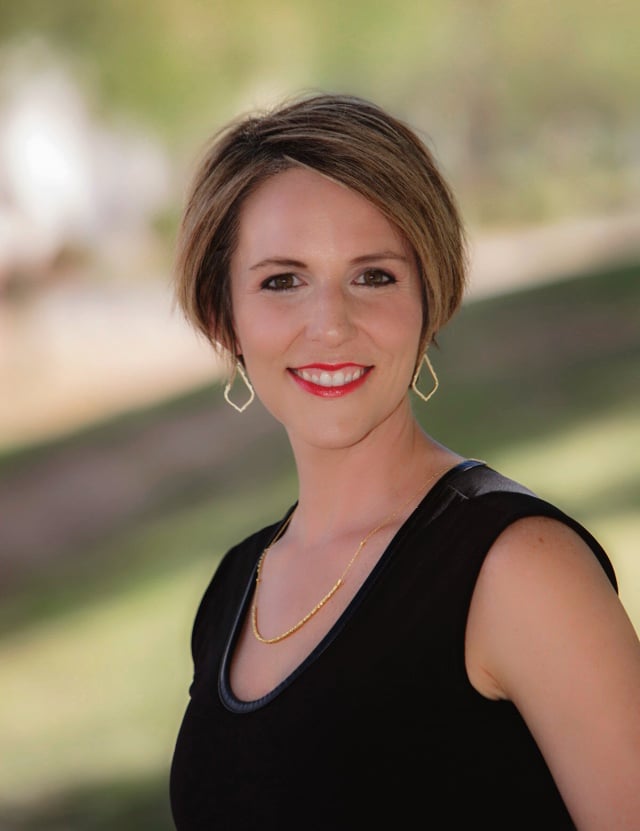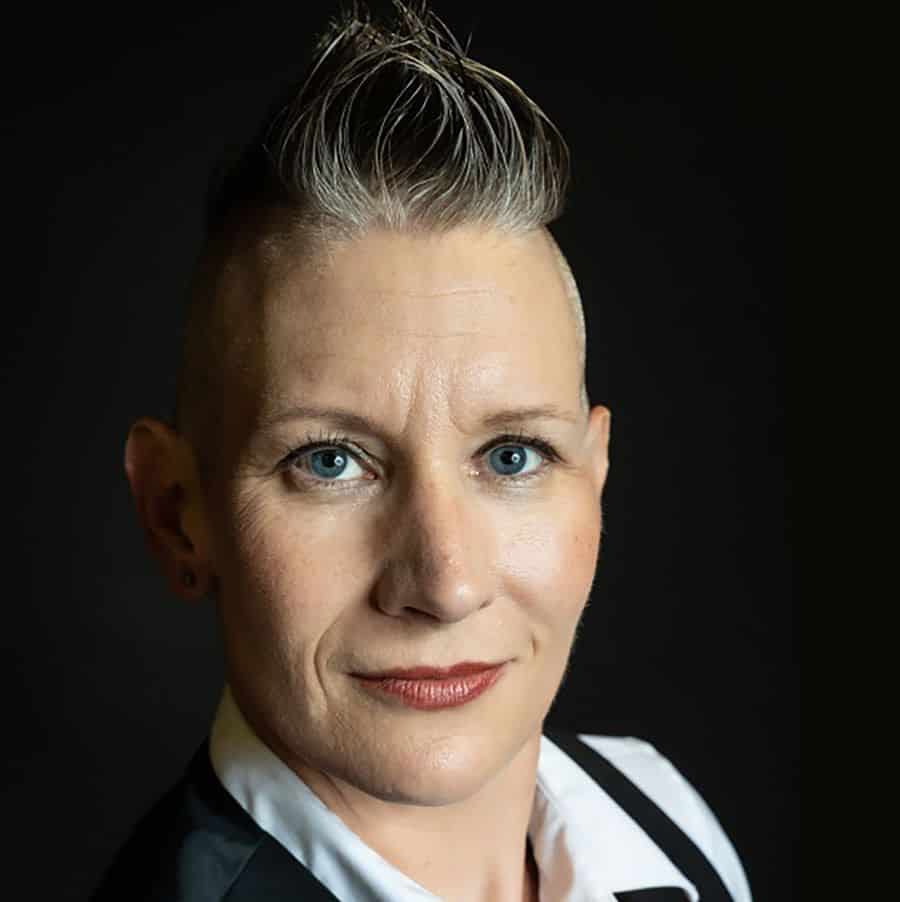Billie Tarascio is one of those lawyers who I love to watch to see what she’s doing next — because she’s always doing something new. She is the owner of Modern Law, a family law practice based on Mesa, Arizona, and she’s one of the ABA Journal’s newest Legal Rebels. I admire how fearless Billie is in trying new ways to run a more efficient practice and provide effective services to clients.
In October, Billie is speaking at Clio Cloud Conference 2018 (aka Clio Con) in New Orleans on “How to Run a Modern Law Firm.” She graciously shared some of her preliminary thoughts prior to the event.
Q: Your talk at Clio Con is titled “How to Run a Modern Law Firm.” How do you define a “modern” law firm? Is it based on systems, technology, fee structure, attitude, philosophy?
Billie Tarascio: To me, a modern firm is run with a true vision and culture. It is clear about who it serves, what it is trying to accomplish as an organization and why. A modern firm serves its employees as well as its customers and is open to policies that are best for them. Young lawyers want training, mentoring and direction. They want to be inspired and part of something bigger than themselves. A modern firm relies on data and technology for improved operations and decision-making. Processes (including marketing), intake and operations are all designed to be both customer-centric and in line with the firm’s values. Clients have changing desires that aren’t always clear. We really have to listen to them and provide a variety of offerings in order to be a modern law firm.
Q: Your practice focuses on divorce. What makes your practice different from other divorce practices?
BT: We are a culture and values-centric firm. We are obsessive about growth and becoming better at everything we do. We work together as a team on systems, processes and the company infrastructure. We have a fun committee and a marketing committee and have a very open office. We are always open to delivering services in a different way or exploring alternative pricing structures.
Q: Did you start out as a solo? How did you know it was time to add more attorneys to the practice, and what were the biggest challenges in that?
BT: I didn’t actually start as a solo. I originally opened in Arizona in 2010 as a low-cost, pay-as-you-go law firm. We opened with half a dozen or so attorneys who were all contractors practicing various different types of law. Financial models for small firms are tough. Deciding when to hire is one of the most difficult decisions. Now, I know my firm well enough in terms of conversion numbers at every level to tell when I can hire. For instance, I know how many leads schedule, attend and convert into clients. I know the average client spend and therefore the capacity of each attorney, so I can predict when business is growing or shrinking and adjust accordingly.
Q: What’s your guiding philosophy as a lawyer and entrepreneur?
BT: Our values are whole health, growth, creativity, optimism, bravery and empathy. These are fundamental to my being. When we tried a conservative growth plan this year, I just couldn’t do it. Growth is part of me and I constantly have to balance that desire with the needs of my firm and clients. But, we are optimistic and creative, so we will try new things to get the desired results.
Q: Tell me about your flat fee option for divorce clients. How do you make sure the firm doesn’t lose money on these cases?
BT: Flat fees are difficult in litigation, and I am still experimenting. The fee agreement I use on the most consistent basis is a hybrid model of hourly fees for certain work and flat fee charges for predictable items like drafting pleadings, attending hearings, etc. We are continuing to experiment with menu concepts or contractor style bids in addition to limited scope flat fee services.
Q: At your firm’s open house, I noticed your office has a warm, inviting atmosphere and your employees seem particularly happy. Would you share what you’ve done in terms of office culture and policies to improve your employees’ professional lives?
BT: In my humble opinion, employee wellness is particularly underrated in most law firms. We have a management structure that ensures we stay connected to our employees and that we listen to them. They are invested and involved because these are relationships worth paying attention to. We close early on Fridays, bring in yoga instructors, make regular time for fun and positive feedback.
Q: You said you make decisions in your practice based on data. What data do you examine and how does it help you as a business owner?
BT: We are looking at key data points for everything from leads and sales numbers to conversion at every level, employee productivity, client satisfaction, budget and finance analysis, ROI on various ad spends and areas of law. We are looking at both a macro and micro level. Data is an amazing tool for conducting experiments and making decisions.
Q: Your practice has two offices in the Phoenix area. How did you decide to have two locations instead of one big office? How do you manage that many people, particularly the ones you don’t see every day?
BT: Our office locations are set up to better serve our clients and employees. Analysis of both our target market and our key employees has helped determine where to locate. We want to expand both locations and are also looking at the West Valley. Everything can be done remotely. We use Slack for internal communications. Some meetings are in-person but many can be done from wherever the employee is currently working.
Q: You have eight attorneys besides yourself in your practice. How do you balance managing your business, building your business, and taking care of your clients?
BT: There is a particularly useful exercise to help determine roles. responsibilities, and when and how to grow that helps to make sure we don’t take on too much as an individual. The growth plan helps us see in advance when to “elevate and delegate” so that we still have time for ourselves, one another and clients.
Q: What unsolicited advice do you have for other lawyers who operate their own practices?
BT: Ha! I have an entire book, co-authored with four other lawyers, that should be out by the end of the year. It’s called “Tiger Tactics: Powerful Strategies for Winning Law Firms.” It is literally chock-full of unsolicited advice on everything from intake, to consultations, to hiring, vision and more.
My new project “Modern Law Practice” is a very hands-on consulting/implementation project of putting best practices in terms of software, automation and methodology into law firms around the country. The impact on the firms we are working with has been measurable and immediate. In many ways I am using my role in Modern Law, as more CEO than practitioner, and applying it to firms that aren’t yet big enough to have their own CEO. It’s an absolute blast!
Full Disclosure: We had no idea Billie had a book coming out, but we’re excited to read it! She treats her practice as a lab, and she’ll no doubt have insights anyone can consider applying to their law firm. If you are attending Clio Con this year, I highly recommend you attend Billie’s session (and watch for her book later this year). Note that Attorney at Work is a media sponsor of the event, which means you can use the code ATTNYATWORK to register for the conference and save 35 percent on registration (single pass or single pass bundle).
Illustration ©iStockPhoto.com. Photo courtesy of Billie Tarascio.

















